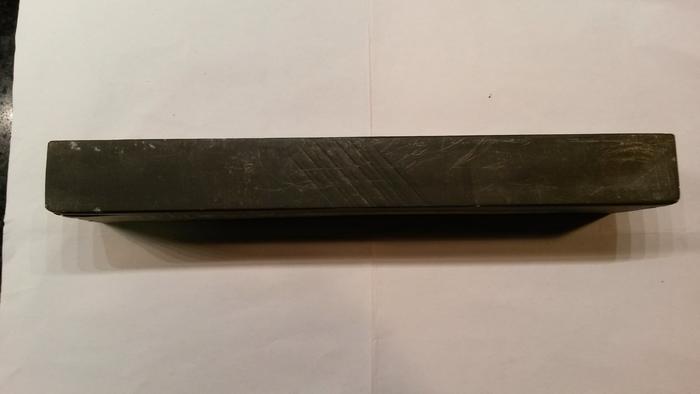Results 11 to 20 of 21
-
02-18-2016, 12:47 AM #11

 Well.........lets try the last photo..........This looks for all the world like I've got the picture thing figured out. But then maybe not. Either way we'll be the first to know.
If you find a starving dog and feed him he will not bite you. This is the principle difference between dogs and men.
Well.........lets try the last photo..........This looks for all the world like I've got the picture thing figured out. But then maybe not. Either way we'll be the first to know.
If you find a starving dog and feed him he will not bite you. This is the principle difference between dogs and men.
Mark Twain
-
02-18-2016, 12:49 AM #12

I think I've got it............Now to use a camera instead of my phone..........
If you find a starving dog and feed him he will not bite you. This is the principle difference between dogs and men.
Mark Twain
-
02-18-2016, 12:50 AM #13

I would call this hone a paradox; English instructions but foreign from the currently English speaking world, because of the African name as mentioned... If there was a mine in Africa that was extracting hones commercially, I find this to be excellent news for the hones world. Even thinking about the potential Africa has about hones that are extracted but are not available to the west or east, or waiting to be extracted... I hope you are right and the stone is of African origin.
Some info from wikipedia on Zambia and UK;
"In 1888, the British South Africa Company (BSA Company), led by Cecil Rhodes, obtained mineral rights from the Litunga..."
"In 1923, Southern Rhodesia (now Zimbabwe), a conquered territory which was also administered by the BSA Company, became a self-governing British colony. In 1924, after negotiations, administration of Northern Rhodesia transferred to the British Colonial Office.", and this continued until at least 1961.
It also has "considerable of mineral wealth" including a lot of Copper deposits.
https://en.wikipedia.org/wiki/Zambia the full article. A lot of guessing in the whole theory, but I would assume, when they were searching for these minerals, they found deposits of material capable of used as a hone.
By the way, it's the first time a stone like this one appears on the forum, so, don't expect a lot of people to describe their experience with it. We've also lost two one of a kind "rock scholars" the last couple of years, which makes things harder, still I don't think even them would know about this one.
Assuming you have experience with naturals, please share with us the characteristics of the stone. Hardness, feedback, fineness etc.
-
02-18-2016, 07:50 AM #14Senior Member

- Join Date
- Sep 2013
- Location
- NW Indiana
- Posts
- 1,060
Thanked: 246
Interesting stuff, never heard of them. Definitely better pics (especially better lighting) might help to give an idea if it's just a relabeled stone that is commonly used elsewhere or something unique. Where did you procure the stone, and what are its dimensions?
-
02-18-2016, 08:05 AM #15

Definately looks like a thuringian hone to me from the pictures.
-
02-18-2016, 10:40 AM #16Senior Member

- Join Date
- Sep 2013
- Location
- NW Indiana
- Posts
- 1,060
Thanked: 246
I was thinking the same thing.
-
02-18-2016, 12:58 PM #17Senior Member

- Join Date
- Sep 2014
- Location
- Bulgaria
- Posts
- 840
Thanked: 168
Eah looks like thuri to me - rebranded for some company
-
02-20-2016, 09:59 PM #18

The dimensions of the stone are as follows: Length..........8 3/8" (21.2 cm)
width............1 7/8" (4.8 cm)
depth...........1 1/16" (2.7 cm)
How it wound up here on the Southern Oregon Coast I have no idea.If you find a starving dog and feed him he will not bite you. This is the principle difference between dogs and men.
Mark Twain
-
02-21-2016, 06:39 AM #19Senior Member

- Join Date
- Sep 2013
- Location
- NW Indiana
- Posts
- 1,060
Thanked: 246
That's the same size as my Y/G Escher except thicker. Mine is only a little over ¾" thick. Got any Thuris? Seem like one to you?
-
02-21-2016, 10:35 AM #20


 11Likes
11Likes LinkBack URL
LinkBack URL About LinkBacks
About LinkBacks






 Reply With Quote
Reply With Quote



